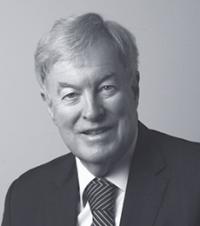Commissioner's review

John Lloyd PSM
Australian Public Service Commissioner
The Australian Public Service employs about 152,000 people.
The Australian Public Service Commission employs 207 people to discharge its responsibilities.
The Commission staff, like most public servants, work assiduously and with flair. They embrace the challenges that working in government frequently entails.
Australian Public Service workplaces, like other workplaces, are dynamic. The times demand a capability to deal with challenges arising from digital transformation, big data, inclusiveness, social media engagement, tight funding, intensified security and high community expectations. The Government expects and receives high-quality advice and policy delivery in the midst of these challenges.
Australian Public Service employees are interested in their working conditions and environment. The Commission’s 2017 employee census achieved a remarkable 71 per cent response. The 99,000 respondents told us they are very engaged with their work. They rate their leaders favourably and are generally satisfied with their pay and conditions. Most agencies achieved improved results compared to previous years.
At the same time we cannot be complacent. Responses on bullying and harassment and unethical conduct point to the need for attention and improvement.
The year saw enterprise bargaining drawing to a conclusion, notwithstanding a self-serving campaign by trade unions to delay agreements. An important outcome is that many agencies now have an enterprise agreement more attuned to operational requirements. Also, direct employer–employee relations are enhanced and flexible work arrangements embedded as the preferred operating model. The importance of flexible work conditions in attracting and retaining talented staff cannot be ignored.
Talent was a key focus for the Commission during the year. It will continue to be so in the future.
A Secretaries Talent Council was formed. It coordinated a pilot exercise that allowed 10 high-potential deputy secretaries to engage in an intensive process of assessment and future capacity building plans. Similar exercises were undertaken for other Senior Executive Service and Executive officer levels. The public service leaders of today have a responsibility to develop a highly competent leadership pipeline for the future.
The changes that will impact on work in the future are attracting considerable scrutiny. Some of the projections are sensational and alarmist.
The Australian Public Service has always been affected by change. In the future innovation through digital delivery and artificial intelligence will cause disruption and change. The public service must have flexible workplace arrangements to adapt and cope. This underlines the importance of good bargaining outcomes and sound employer-employee relations. Innovative workplaces will provide opportunities for employees to undertake more fulfilling work.
I can exert some direct influence on work practices through the Commissioner’s Directions. I have moved to streamline the Directions so they support this crucial requirement of improved flexibility.
During the year new Directions relaxed restrictions on the engagement of non-ongoing employees. Recruitment processes were streamlined and broad affirmative measures were introduced for disability and Indigenous employment.
The Australian Public Service is equipped to provide the Government and the community with efficient, effective, professional and impartial support.



